Biomechanics Force
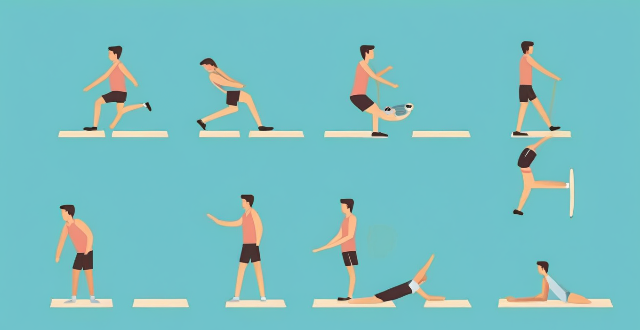
How do force vectors influence an athlete's movement in sports biomechanics ?
Force vectors play a crucial role in sports biomechanics. The magnitude and direction of force vectors determine an athlete's acceleration, deceleration, and direction of motion. There are several types of force vectors, including internal, external, contact, frictional, and elastic forces. Understanding how these force vectors influence an athlete's movement is essential for improving performance and preventing injuries in sports. Coaches and athletes can use this knowledge to optimize their training programs and techniques.
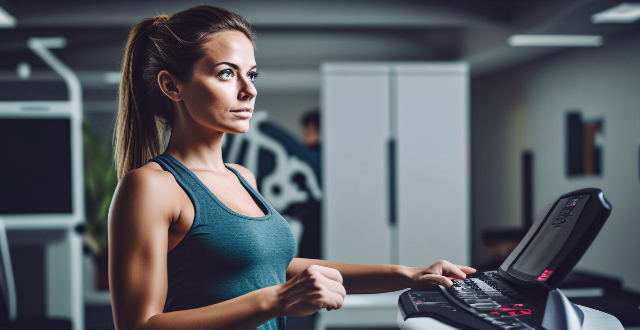
What role does kinetics play in the study of sports biomechanics ?
Kinetics is a key aspect of sports biomechanics, focusing on forces and motions in physical activity. It aids in understanding how athletes generate power, control movements, and enhance performance. Key points include force analysis (internal and external), energy considerations (potential, kinetic, work, and power), movement efficiency (mechanical advantage, joint reaction forces, ground reaction forces), injury prevention and rehabilitation (overuse and traumatic injuries, rehab programs), and performance optimization (technique analysis, equipment design, training methods). Overall, kinetics helps coaches, athletes, and researchers make informed decisions about training, equipment, and technique to achieve safe and effective goals.

What is sports biomechanics and how does it apply to athletic performance ?
Sports biomechanics is a subdiscipline that applies mechanics principles to study human movement in sports and exercise. It focuses on how forces and motion affect the body during physical activity, combining knowledge from physics, biology, engineering, and other areas for understanding and improving athletic performance. Key concepts include kinematics, kinetics, and dynamics. Applications of sports biomechanics include injury prevention through gait analysis and movement optimization; technique improvement via motion analysis and force plates; equipment design considering ergonomics and material science; training programs that incorporate resistance, flexibility, and stability training; performance analysis using data analysis and feedback systems; and recovery strategies like physical therapy and rest-activity balance.
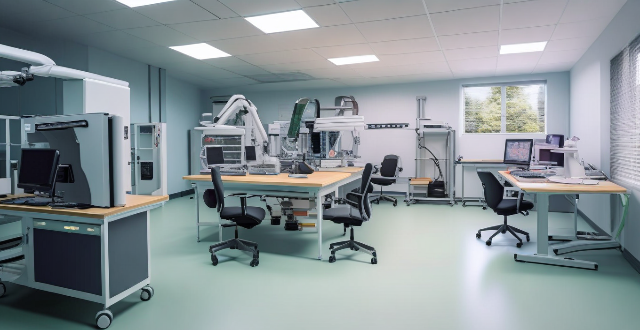
In what ways can technology be utilized to enhance sports biomechanics analysis ?
Technology has revolutionized sports biomechanics analysis, providing new tools and methods for coaches, athletes, and researchers. Video analysis software allows frame-by-frame review of performances, wearable technology provides real-time data on an athlete's physiology, force plates measure ground reaction forces, motion capture systems track movements in three dimensions, and computer simulation modeling creates virtual models of an athlete's movements. These technologies have made it easier than ever before to collect and analyze data on an athlete's performance, leading to improved training programs, injury prevention, and overall performance optimization.

How does understanding joint mechanics contribute to improving athletic performance through sports biomechanics ?
Understanding joint mechanics is crucial for improving athletic performance in sports biomechanics. By optimizing movement patterns, preventing injuries, enhancing force production, and improving stability, athletes can achieve greater success in their chosen sports. Sports biomechanists analyze an athlete's joint mechanics to develop targeted training programs that improve joint function and overall performance. Advances in sports technology provide real-time feedback on joint mechanics during training and competition, allowing athletes to fine-tune their technique and make adjustments to their training program as needed.

How do the principles of sports biomechanics differ between individual and team sports ?
This text discusses the principles of sports biomechanics in individual and team sports. It highlights the differences in kinematics, kinetics, and coordination between the two types of sports. In individual sports, there is a focus on precision, technique optimization, and personal performance, while team sports emphasize strategic interactions, group coordination, and adaptability to complex game situations. The text concludes by emphasizing the importance of understanding these distinctions for coaches and athletes to tailor their training approaches to best suit the specific demands of their chosen sport.
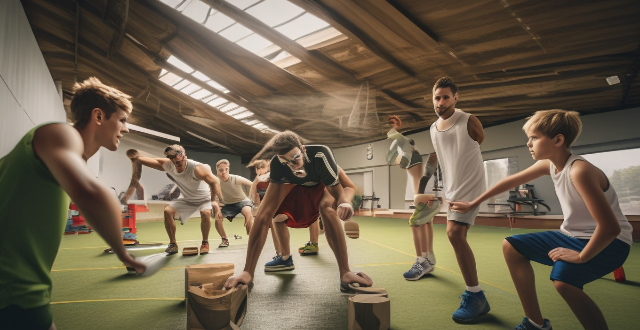
How does sports biomechanics address the unique challenges faced by athletes with disabilities ?
Sports biomechanics plays a crucial role in addressing the unique challenges faced by athletes with disabilities. It helps optimize their performance, enhance their training, and improve their overall well-being through customized equipment design, gait analysis and rehabilitation, sport-specific technique optimization, inclusive sports development, and education and advocacy efforts.

Can studying sports biomechanics help prevent injuries in athletes ?
Sports biomechanics can help prevent injuries in athletes by identifying risk factors, optimizing movement patterns, and providing feedback and guidance. Examples include analyzing baseball pitchers' mechanics to reduce strain on their joints, gymnasts' movements to identify areas of stress, and runners' form to improve efficiency and reduce strain on their knees and ankles. By working with coaches and trainers who specialize in sports biomechanics, athletes can improve their technique and reduce their risk of injury over time.

What is the importance of biomechanics in sports research and development ?
Biomechanics is crucial in sports research and development. It involves the study of body movement and its interaction with external forces. By understanding biomechanics, athletes can improve performance, reduce injury risk, and enhance athletic ability. Biomechanics helps identify areas for improvement, prevent injuries, and develop better coordination and control. Overall, it's essential for athletes to reach their full potential.

In what ways do factors like body composition and flexibility affect sports biomechanics ?
In sports biomechanics, body composition and flexibility are crucial factors affecting performance. Increased muscle mass and a high strength-to-weight ratio enhance power in weightlifting and sprinting. A lower fat percentage improves aerodynamics and reduces energy expenditure in endurance activities. Higher bone density offers better support in impact-heavy sports. Greater flexibility increases the range of motion, preventing injuries and improving efficiency in rapid movements. Optimal body composition and flexibility can significantly improve an athlete's performance and reduce injury risk.

How can coaches use sports biomechanics to optimize training programs for their athletes ?
How coaches can use sports biomechanics to optimize training programs for their athletes, including improved technique, injury prevention, and enhanced performance. Steps to integrate sports biomechanics into training programs include assessing the athlete's baseline performance, analyzing their technique, designing a customized training program, monitoring progress and making adjustments, and incorporating technology into training sessions. Examples of how sports biomechanics can optimize training programs include strength training, running mechanics, and swimming technique.

How do immigration policies affect the labor force participation of immigrants ?
Immigration policies significantly impact the labor force participation of immigrants by determining their legal status, access to services, family reunification, economic opportunities, and protection from discrimination. Policies that provide work permits, authorization to work, language training, education and training programs, healthcare, social safety nets, family support, childcare options, business opportunities, self-employment regulations, equal employment opportunities, and protection from exploitation can all contribute to successful integration of immigrants into the workforce. This benefits both the immigrants and the host country's economic growth and development.

How can biomechanics help athletes optimize their performance ?
Biomechanics aids athletes in optimizing performance through improved technique, enhanced training methods, and injury prevention. It involves analyzing movement patterns, optimizing coordination, creating customized training programs, integrating technology, identifying risk factors for injuries, and providing rehabilitation support. Mental aspects are also addressed through cognitive strategies and feedback mechanisms. Overall, biomechanics offers a multifaceted approach to help athletes reach their peak potential safely and effectively.
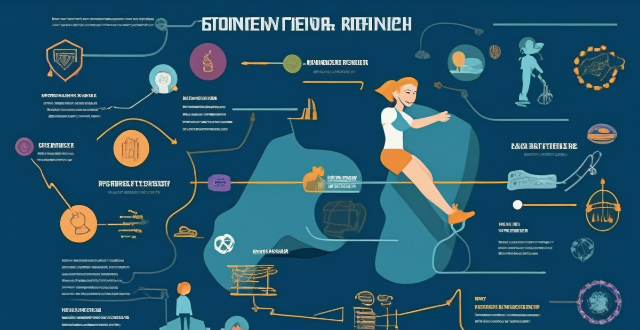
How can sports research and development help prevent injuries ?
Sports research and development can help prevent injuries by understanding injury mechanisms, developing prevention strategies, and utilizing technology and education. Biomechanics studies and epidemiological research provide insights into how forces affect the body during physical activity and identify common factors that contribute to injuries. Based on these findings, sports scientists can design training programs that target specific areas of the body, improving strength, flexibility, and endurance. Technology and equipment advancements also play a role in protecting athletes from injury. Educating coaches, athletes, and parents about proper technique and safe training practices is essential for creating a culture of safety. Overall, sports research and development are crucial for minimizing the risk of harm and promoting a safer environment for all participants.

What is the TCFD (Task Force on Climate-related Financial Disclosures) ?
The Task Force on Climate-related Financial Disclosures (TCFD) is an initiative by the Financial Stability Board aimed at standardizing how companies report climate-related financial impacts. It covers four main areas: governance, strategy, risks and opportunities, and metrics and targets. By adhering to TCFD guidelines, companies can enhance transparency, improve risk management, align with sustainable development goals, and boost their reputation among stakeholders.
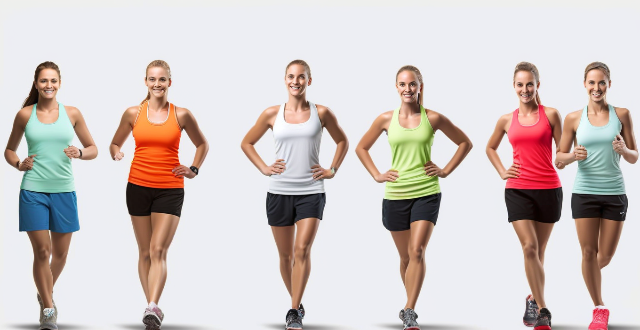
What are the benefits of using sports technology analysis in training ?
Sports technology analysis has revolutionized training for athletes and coaches by providing valuable insights into performance, injury prevention, personalized training programs, and increased motivation. Sensors, cameras, wearable devices, and other tools capture data on various aspects of an athlete's performance, such as speed, power, agility, and endurance. This data can be analyzed to identify areas for improvement and develop targeted training plans. Additionally, monitoring an athlete's movements and biomechanics during training sessions helps detect potential issues that may lead to injuries, allowing coaches to modify their training programs accordingly to reduce the risk of injury. Sports technology analysis also enables coaches to create personalized training programs tailored to each athlete's specific needs and goals. Analyzing data collected from various sources helps identify strengths and weaknesses in an athlete's performance, leading to faster progress and better results for individual athletes. Finally, incorporating technology into training sessions makes workouts more enjoyable and engaging for athletes, ultimately leading to greater adherence to their training programs.

Which economic indicators are used to measure the health of the labor market ?
The health of the labor market is crucial for any economy, and several economic indicators are used to measure it. These include the unemployment rate, employment growth, labor force participation rate, wage growth, and job openings and vacancies. The unemployment rate measures the percentage of the labor force that is unemployed but actively seeking work, while employment growth refers to the number of new jobs created over a specific period. The labor force participation rate measures the percentage of working-age individuals who are either employed or actively seeking employment, and wage growth reflects the earning power of workers. Job openings and vacancies provide insight into the demand for labor within the economy. By monitoring these indicators regularly, stakeholders can identify trends and potential issues early on, allowing them to take proactive steps to address any challenges and promote a healthy labor market.

What are the latest advancements in sports science ?
The text discusses the latest advancements in sports science, including wearable technology, nutritional science, biomechanics, and mental training. Wearable technology provides real-time data on an athlete's performance, while nutritional science focuses on specialized diets and supplements. Biomechanics studies human movement to improve form and reduce injuries, while mental training techniques help build confidence and manage stress. These advancements have revolutionized athletic performance across all levels of competition.

How has technology impacted sports research and development ?
Technology has significantly impacted sports research and development by introducing advanced tracking systems, virtual reality training, data analysis tools, biomechanics applications, and nutrition science advancements. These technological innovations enable athletes, coaches, and researchers to optimize performance, prevent injuries, and gain a deeper understanding of the science behind sports.
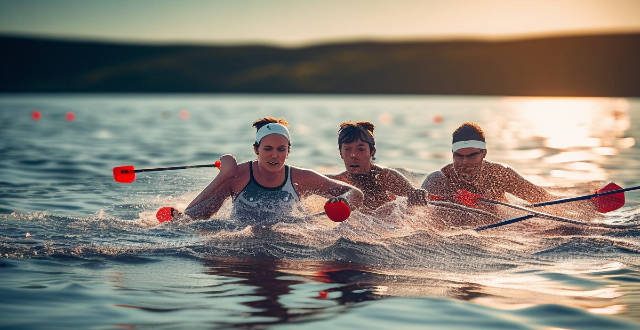
How does exercise physiology help in preventing sports injuries ?
Exercise physiology helps prevent sports injuries by understanding body mechanics, energy systems, and recovery needs. Athletes can reduce injury risk through proper warm-up/cool-down, cross-training, progressive overload, and sufficient recovery time.

What are some emerging fields in sports research and development ?
The text discusses the emerging fields in sports research and development, highlighting five main areas: wearable technology and data analytics, virtual reality and augmented reality training, sports psychology and mental health support, nutrition science and gastrointestinal health, and biomechanics and injury prevention. Each section provides a brief overview of the field's benefits and potential impact on improving athletic performance, preventing injuries, and promoting overall well-being.
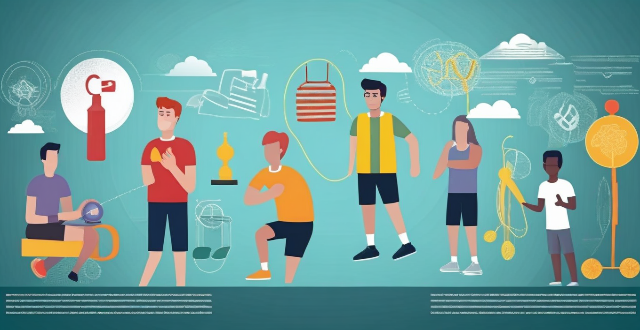
What is sports technology analysis ?
Sports technology analysis is a process of using advanced technologies to collect, analyze, and interpret data related to sports performance. The goal of sports technology analysis is to improve athletic performance, enhance coaching effectiveness, and optimize team management. Key areas of sports technology analysis include biomechanics, physiology, video analysis, wearable technology, and data analytics. By utilizing these tools and techniques, coaches can gain valuable insights into athletes' physical abilities, training methods, equipment usage, and game strategies. This leads to better overall performance and increased success in competitions. Sports technology analysis also enhances coaching effectiveness by providing coaches with detailed information about athletes' strengths and weaknesses, allowing them to develop more effective training programs that target specific areas for improvement. Additionally, sports technology analysis helps optimize team management by monitoring players' workloads and fitness levels through wearable technology and other tracking systems. Overall, sports technology analysis is a powerful tool that allows coaches to make more informed decisions about player development, game strategies, and team management.

How can sports research and development improve athletic performance at all levels ?
Sports research and development (R&D) play a crucial role in enhancing athletic performance across various levels, from amateur to professional athletes. By employing scientific methods, technology, and data analysis, sports R&D helps athletes optimize their training, improve technique, prevent injuries, and ultimately achieve better results. Key areas of impact include biomechanics and technique optimization, training methodologies, nutrition and recovery, mental training, and injury prevention and rehabilitation. Implementation strategies involve a collaborative approach, continuous learning, individualization, and embracing technology. Sports R&D offers a multitude of avenues to enhance athletic performance, and the integration of cutting-edge science and technology will continue to drive advancements in sport, pushing the boundaries of human performance further than ever before.

How does climate change influence the operational environments for defense forces ?
Climate change is significantly impacting the operational environments for defense forces, affecting military planning, strategy, and tactics. Extreme weather events are becoming more frequent, requiring defense forces to manage or support disaster response operations. Changes in terrain and landscape due to melting ice caps and rising sea levels can affect military operations. Climate change can exacerbate social tensions and conflicts over resources, leading to internal displacement and potential security threats. Health risks and disease spread can expand due to changes in temperature and rainfall patterns. Energy requirements and logistics may need adjustments in operational environments affected by climate change.

What is the role of exercise physiology in improving athletic performance ?
Exercise physiology, a branch of science that studies the body's responses to physical activity, is crucial for improving athletic performance. It helps in understanding the body's reaction to different exercises, training methods, and recovery strategies. By applying these principles, athletes can optimize their training programs and enhance their results in sports. The text discusses the following key points: 1. **Understanding the Body's Response to Exercise**: This includes the differences between aerobic and anaerobic energy systems and muscle fiber types, which are crucial for determining suitable exercises for various activities. 2. **Optimizing Training Programs**: Periodization, intensity, and volume are essential elements in planning effective training programs. 3. **Recovery Strategies**: Proper nutrition, sleep, and active recovery techniques aid in post-exercise recovery. 4. **Injury Prevention and Rehabilitation**: Biomechanics, strength, and flexibility training play significant roles in preventing injuries. In conclusion, exercise physiology provides valuable insights into how the body responds to various training stimuli and recovery strategies, allowing athletes to make informed decisions about their training programs. This knowledge enables them to improve performance, prevent injuries, and achieve their goals more effectively.